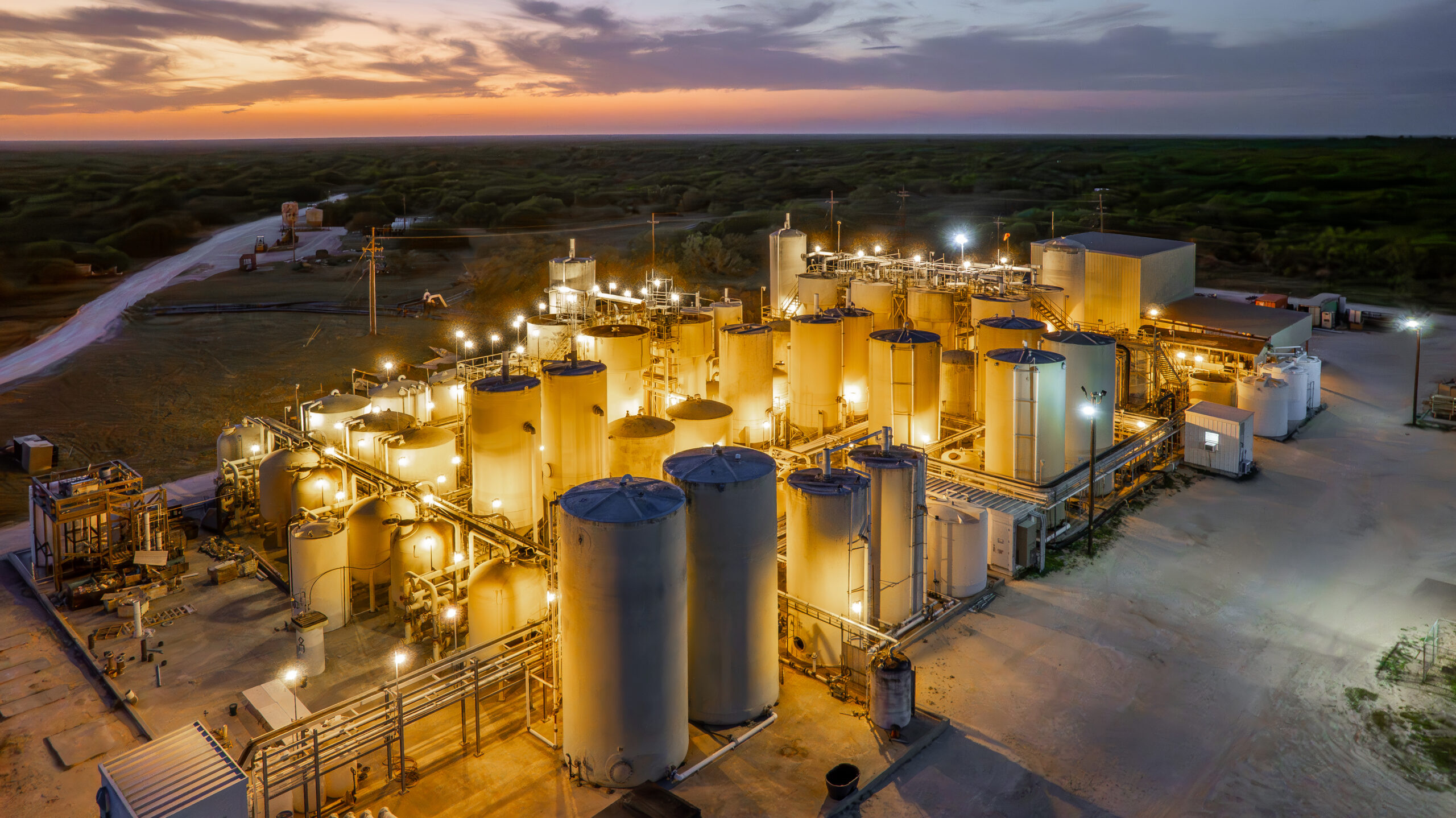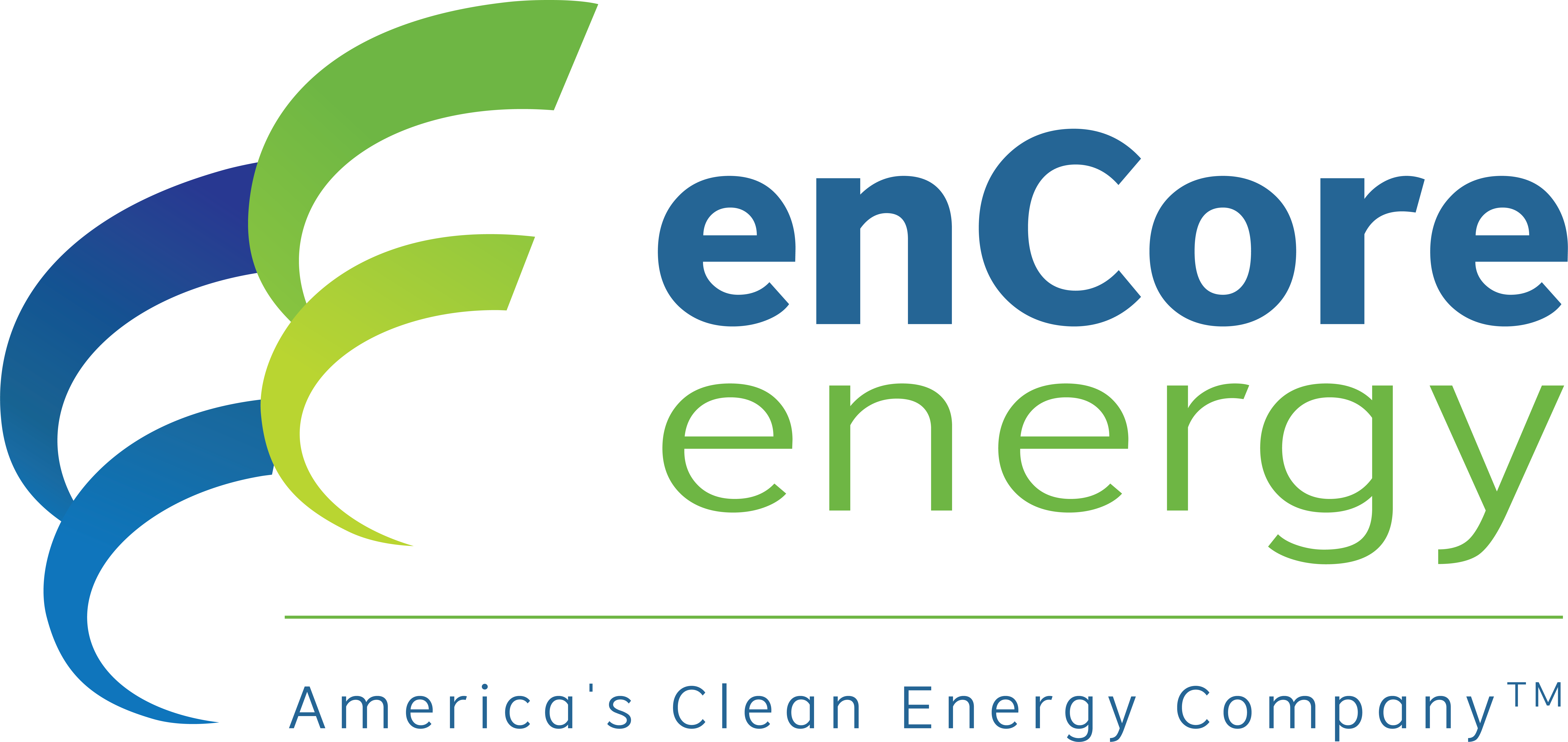New Uranium Discoveries at Alta Mesa Expand US Supply Resilience & Strengthen enCore's Low-Cost Growth Pipeline

enCore Energy discovers new shallow uranium at Alta Mesa, Texas. Only US company with multiple operational ISR plants expands domestic production capaci
- New shallow uranium discoveries at enCore Energy's Alta Mesa ISR project expand the company's near-term production potential within already permitted wellfields.
- ISR technology advantage supports lower all-in sustaining costs and capital efficiency compared with conventional mining methods, enhancing enCore's competitive cost position.
- Domestic uranium supply importance grows amid US efforts to onshore nuclear fuel production and reduce dependence on Russia and Kazakhstan.
- Scalable production strategy positions enCore to increase output across multiple US plants as wellfield expansion progresses through 2025 and beyond.
- Strong management and balance sheet with US$46 million cash and US$21 million in securities as of fiscal year 2024 underpin execution capability and mitigate dilution risk as expansion accelerates.
The Strategic Context: US Uranium Supply Security & Policy Tailwinds
The US nuclear fuel supply chain is undergoing a structural realignment driven by decades of import dependency. Years of reliance on Russia, Kazakhstan, and Uzbekistan have exposed critical vulnerabilities across the downstream fuel cycle, from conversion and enrichment through final fabrication. This dependency carries strategic risks that extend beyond supply disruption to encompass geopolitical leverage and energy security concerns.
The Department of Energy and Congress have responded with aggressive policy initiatives designed to rebuild domestic uranium production capacity. Recent measures include funding for high-assay low-enriched uranium enrichment infrastructure, establishment of domestic uranium stockpiles, and strategic procurement agreements that prioritize American-origin material. These programs signal a fundamental shift in federal policy toward supply chain sovereignty in nuclear fuel.
For uranium producers, this policy environment creates direct contracting opportunities with both federal agencies and utilities seeking to diversify their supply portfolios. The premium on permitted, scalable production capacity has increased substantially as procurement timelines extend and utilities face limited domestic supply options.
enCore Energy (NASDAQ: EU; TSXV: EU) emerges as one of the few operators with fully operational in-situ recovery infrastructure capable of expanding uranium output from existing, fully permitted facilities. Its Alta Mesa and Rosita plants in South Texas position the company to capitalize directly on federal and utility-level contracting trends favoring American-origin uranium. The company's operational readiness distinguishes it within a peer group dominated by development-stage projects with multi-year timelines to production.
Project Overview: Alta Mesa's Strategic & Operational Strengths
The Alta Mesa ISR Uranium Project in South Texas represents one of the most advanced, licensed, and historically productive in-situ recovery operations in the United States. Operating under a 70/30 joint venture with Boss Energy Limited, enCore manages the facility and wellfields, which span over 200,000 acres of private land and mineral rights.
The project hosts a fully operational Central Processing Plant with 1.5 million pounds annual nameplate uranium processing capacity and 0.5 million pounds of drying capacity. Between 2005 and 2013, Alta Mesa produced nearly 5 million pounds U₃O₈, demonstrating repeatable ISR performance and robust groundwater-hosted mineralization within the Goliad Formation. The company has resumed uranium processing at the facility, with oxygenated water currently being circulated through injection and extraction wells feeding the Central Processing Plant.
The regulatory framework at Alta Mesa offers significant competitive advantages. All oversight occurs at the state level through the Texas Commission on Environmental Quality, substantially simplifying permitting timelines relative to federal jurisdictions governed by Nuclear Regulatory Commission processes. Texas's established ISR regulatory framework enables faster permit approvals for wellfield expansions while maintaining rigorous environmental standards.
The project's land position comprises predominantly private surface and mineral rights, eliminating many of the access and stakeholder complications that affect projects on federal or mixed-tenure lands. This ownership structure accelerates development timelines and reduces non-technical risk factors that can delay mining projects in other jurisdictions.
The operational advantages extend beyond regulatory frameworks to fundamental project characteristics that support efficient ISR extraction. William Sheriff, Executive Chairman, highlights the company's operational efficiency and the imperative to maintain drilling momentum ahead of production:
"Our uranium comes out of the ground quicker than most. We don't have the typical problems that you see on restarts… Our cash flow comes in quicker, but it also means we need to stay ahead of production in terms of drilling and development."
New Roll-Front Discoveries: Expanding the Resource Base at Minimal Cost
In October 2025, enCore Energy announced the discovery of multiple new uranium mineralized roll fronts within and adjacent to existing wellfields at Alta Mesa. These discoveries resulted from a detailed re-analysis of thousands of historical drill holes, a systematic review initiative that commenced in April 2025 and is expected to continue through the end of the year, with follow-up delineation drilling extending into 2026.
The analytical approach focused on disaggregating the extensive historical database by individual sandstone horizons rather than treating the Goliad Formation as a monolithic target. This granular methodology identified mineralized trends that previous interpretations had overlooked or aggregated into broader resource estimates. The result is a more refined understanding of uranium distribution across multiple stacked sand bodies, each with distinct geochemical and hydrological characteristics.
The systematic nature of this resource expansion program reflects a disciplined approach to growth that leverages historical investment in drilling while applying modern analytical techniques. William Sheriff, Executive Chairman, describes the transformative methodology that enabled these discoveries:
"What we've done is we've taken each sandstone separately and looked at what are the cutoff grades, and we're seeing new trends emerge within that giant body of data."
Near-Wellfield Discoveries Accelerate Growth Timeline
Mineralization was identified in three distinct zones that leverage existing infrastructure and permit boundaries. The Wellfield 3 Extension has advanced to permitting stage after geochemical analysis confirmed economic-grade uranium in sandstone horizons that partially overlie or underlie the current production areas. Wellfield 4 contains at least two new roll fronts, each exceeding 2,500 feet in strike length, that fall within existing permit authorizations and require no additional regulatory approvals for development. The Wellfield 1 South Extension continues to expand with ongoing drilling.
These near-wellfield discoveries substantially reduce development risk and capital intensity. Infrastructure including power distribution, access roads, and process piping is already in place. Well installation can proceed immediately upon permitting approval without the lead times typically required for greenfield development.
Shallow Depth Drives Operational Efficiency
The Wellfield 4 discoveries lie at depths of 320 to 345 feet below surface, approximately 200 feet shallower than previous mineralization targeted at Alta Mesa. This vertical advantage translates into measurable operational efficiencies. Shorter drill times reduce footage requirements by nearly 40 percent, lowering both drilling costs and time per well. Reduced cement and casing requirements cut material costs while simplifying wellfield construction logistics.
According to company management, operational refinements and the shallower target depths have substantially improved drilling efficiency, enabling the company to scale production more rapidly and cost-effectively than conventional ISR timelines would suggest.
Quantifying the Upside
Key drilling intersections confirm the economic viability of the newly identified mineralization. Representative results include 5.5 feet at 0.277 percent U₃O₈, yielding a grade-thickness product of 1.522. Additional current drilling highlights include grade-thickness products of 1.13, 0.811, and 0.318. These grades exceed the typical ISR inclusion threshold of 0.3 grade-thickness and fall within the range that supports low all-in sustaining cost operations.
ISR Advantage: Economics, ESG & Scalability
In-situ recovery extraction underpins enCore's low-cost operating model and provides structural advantages relative to conventional mining methods. ISR leverages natural groundwater movement and dissolved oxygen to mobilize uranium directly within the host sandstone, eliminating the need for open-pit excavation or underground hard-rock mining. The dissolved uranium is pumped to surface through production wells, processed at the central plant, and the barren solution is returned to the aquifer through injection wells.
Cost Efficiency
ISR operations typically achieve substantially lower all-in sustaining costs than conventional mining, primarily due to minimal surface disturbance and the absence of tailings storage facilities. Capital intensity remains lower throughout the mine life, as wellfield expansion requires only drilling and piping rather than pit expansion or underground development.
enCore's processing facilities at Alta Mesa and Rosita allow for incremental growth without significant new capital deployment. This infrastructure leverage amplifies margin expansion as production scales. The fixed-cost component of processing operations means that each additional pound of uranium recovered contributes disproportionately to cash flow generation.
Environmental Alignment
ISR's low surface footprint and reduced carbon intensity align with modern environmental, social, and governance frameworks increasingly emphasized by institutional investors and nuclear utilities. The method minimizes land disturbance, typically affecting less than five percent of the total project footprint compared to open-pit operations. Post-extraction restoration allows wellfields to return to baseline groundwater quality and previous land use.
The carbon intensity of ISR uranium production remains substantially lower than conventional mining due to the elimination of ore haulage, crushing, and tailings management. For utilities seeking to maintain the low-carbon profile of nuclear power across the entire fuel cycle, domestically produced ISR uranium offers quantifiable advantages in scope 3 emissions accounting. This environmental positioning strengthens enCore's competitive position in long-term supply contracts where sustainability criteria increasingly influence procurement decisions.
Market Positioning: Building America's ISR Production Platform
enCore is the only United States uranium company with multiple Central Processing Plants in operation, a strategic distinction that differentiates it from exploration-focused peers and development-stage projects. The Alta Mesa and Rosita facilities create an integrated ISR production hub in South Texas capable of supplying utilities directly with American-origin uranium.
This operational status provides immediate commercial advantages. The company participates in current procurement cycles rather than forecasting market conditions years in advance. Production flexibility allows enCore Energy to optimize delivery schedules and contract structures based on real-time market dynamics.
Production Strategy & Pipeline
The company is advancing wellfield development with the objective of steadily increasing production as new roll fronts are brought online and existing wellfields expand. enCore currently operates two fully licensed In-Situ Recovery (ISR) processing facilities in South Texas, the Alta Mesa and Rosita Central Processing Plants, with a combined configured capacity of approximately 1.8 million pounds of U₃O₈ per year. Expansion is underway toward full utilization, with Alta Mesa designed for up to 2.0 million pounds annually as it ramps toward full capacity, while Rosita contributes up to 0.8 million pounds per year through its network of satellite ion-exchange facilities.
Beyond South Texas operations, longer-term growth will be driven by the development of the Dewey-Burdock ISR Uranium Project in South Dakota, which benefits from U.S. Government FAST-41 fast-track permitting, and the Gas Hills project in Wyoming. The company also recently expanded its resource base with the acquisition of the Alta Mesa East Property, which hosts extensions of roll-front uranium mineralization from established Alta Mesa wellfields. A major drill program is expected to begin shortly to define additional production zones and support continued capacity growth.
Financial & Operational Resilience
As of fiscal year 2024, enCore Energy reported US$46 million in cash and US$21 million in marketable securities. While more recent quarterly data was not available at time of publication, this balance sheet position reflects substantial liquidity to support near-term capital programs. Investors should consult the company's latest filings for current financial position.
The company's operating model prioritizes cash flow generation from licensed plants and cost-efficient wellfield development rather than capital-intensive new construction. Capital deployment focuses on high-return drilling and wellfield expansion activities that directly increase production capacity within existing plant infrastructure.
Management sequences development activities to maximize near-term production growth at Alta Mesa while advancing permitting at longer-term projects. This staged approach preserves optionality and reduces the capital intensity required to maintain growth momentum. The production-linked sales contract structure provides insulation against short-term uranium price volatility while retaining leverage to sustained price increases.
Uranium Demand, Pricing & Utility Procurement Trends
Nuclear power has regained momentum in decarbonization planning across major economies. Multiple reactors remain under construction globally, concentrated in China, India, and emerging nuclear markets. The United States, Japan, and European nations have reaffirmed nuclear energy's role in achieving net-zero emissions targets.
Supply discipline in the uranium market has maintained structural deficits despite rising prices. Limited new mine development, slower production growth from Kazakhstan, and the scheduled depletion of secondary supplies have tightened available material. The Russian supply restrictions implemented in 2024 removed a significant portion of US utility supply from the market, accelerating the urgency of domestic procurement initiatives.
Uranium markets have shown resilience in recent quarters, with term contract prices reflecting sustained strength. For investors, this pricing environment underscores the premium on permitted, scalable, and domestic supply.
The Investment Thesis for Uranium & enCore Energy's Role
The investment case for enCore Energy reflects convergence between macro uranium fundamentals and company-specific operational advantages.
- Domestic supply leverage provides direct exposure to US strategic uranium stockpiling initiatives and utility preference for local supply, with enCore Energy operating the only multiple-plant ISR production platform in the United States.
- Cost leadership through ISR's structural advantages supports strong margins across uranium price cycles, with all-in sustaining costs substantially below current market prices providing downside protection and amplified leverage to price increases.
- Production scalability across multiple processing plants and active wellfield expansion provides a visible growth trajectory supported by existing infrastructure and regulatory approvals rather than development-stage execution risk.
- De-risked permitting in Texas jurisdiction, combined with private landholding and state-level oversight, minimizes regulatory barriers that affect peer projects in federal jurisdictions.
- Operational execution capabilities demonstrated through efficient drilling, systematic resource expansion, and successful processing plant operations extend mine life and boost throughput without major capital expenditure requirements.
- Balance sheet strength provides flexibility to pursue growth initiatives while mitigating financing risk, enabling the company to fund wellfield expansion and exploration programs from existing resources.
- Strategic infrastructure ownership of multiple licensed and operational processing plants creates barriers to entry and positions the company as a platform for production growth as demand for domestic uranium accelerates.
A Scalable Producer at the Center of the US Uranium Revival
enCore Energy's roll-front discoveries at Alta Mesa exemplify how existing infrastructure and operational expertise can unlock incremental growth without major capital strain. The systematic re-analysis of historical data demonstrates the value embedded in mature ISR projects where decades of drilling information can be reinterpreted using refined geological understanding.
As policy tailwinds accelerate federal support for domestic uranium production and utilities refocus on American-origin supply, enCore's ISR-led operational model positions it as a cornerstone of the US uranium supply revival. The company balances near-term scalability through wellfield expansion with longer-term growth optionality across its multi-project portfolio.
enCore Energy offers a differentiated proposition through its status as the only US company operating multiple ISR processing plants with demonstrated production capability. The Alta Mesa discoveries reinforce the thesis that permitted, producing assets with expansion potential command premium valuations in an environment where development timelines and regulatory uncertainty constrain new supply growth. In the current uranium market cycle, execution capability and operational leverage separate companies that generate returns from those that remain perpetually pre-revenue.
TL;DR
enCore Energy's October 2025 discovery of multiple shallow uranium roll fronts at its Alta Mesa project in South Texas strengthens America's domestic nuclear fuel supply chain. Through systematic re-analysis of historical drill data, the company identified mineralized zones within existing permit boundaries at depths 200 feet shallower than previous targets, reducing drilling costs by 40 percent. As the only U.S. uranium company operating multiple ISR processing plants, enCore is positioned to scale production rapidly without major capital deployment. The discoveries extend mine life at Alta Mesa while supporting the company's strategy to increase output across its South Texas facilities, backed by long-term utility contracts and a balance sheet holding US$46 million in cash as of fiscal 2024.
FAQs (AI-Generated)
Analyst's Notes




Subscribe to Our Channel
Stay Informed












































